In 1892, the first generation, Fuichi Hagihara, founded Hagihara Fuichi Shoten. Fuichi Hagihara took the name “Maruf” from his own name “Fuichi” and founded the company to manufacture and sell mats for export to the United States.
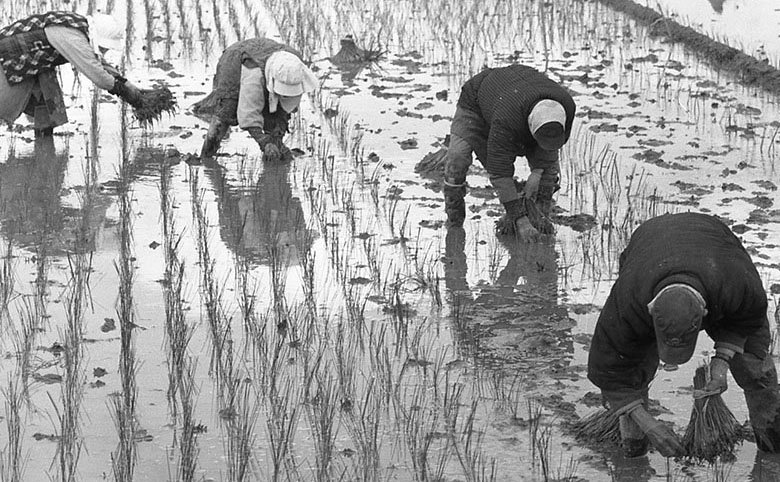
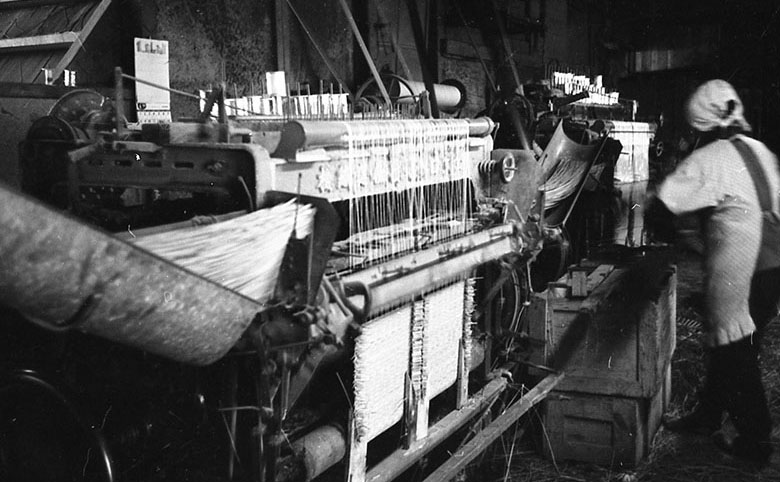
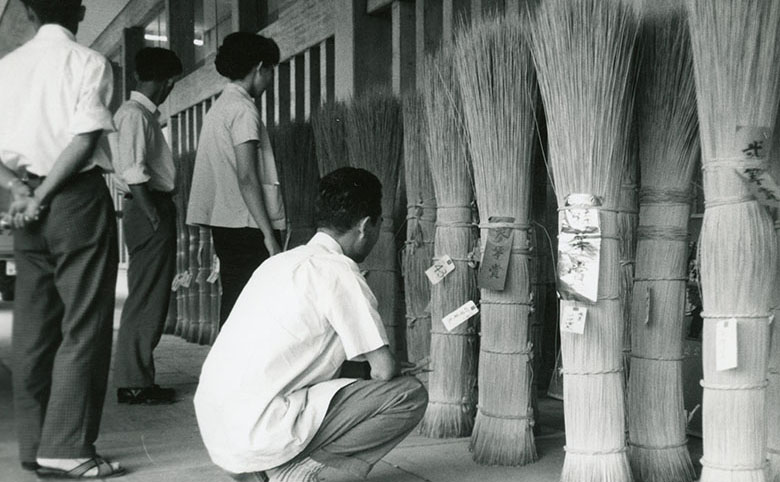
The history of Okayama Prefecture and igusa (rush grass) is deep-rooted. In the 190s AD, during the reign of Emperor Nakaain, the 14th emperor, he stopped in what is now Kurashiki City in Okayama Prefecture for temporary lodging. At that time, using wild grass from the Keima region, he presented a “goza” (a mat) woven with the grass due to its beauty. A decree was issued to weave mats with this wild grass, and it came to be known as igusa no goza.
Furthermore, it is said that the origin of the word “mat” (mat or matting) also comes from “goza.” Subsequently, during the Muromachi period, tatami mats began to be used in Shoin-zukuri architecture, leading to the popularization of igusa. Additionally, during the Azuchi-Momoyama period, land in Kurashiki City increased through reclamation, but the high salt content made it unsuitable for rice cultivation. As a result, salt-resistant igusa and cotton were planted. Thus, until the high economic growth period of the Showa era, Kurashiki became a major producer of igusa.
Entering the Meiji era, exports became prosperous, and igusa products were also exported to Europe and the United States. With foresight, the founder, Fuiichi Hagihara, adopted the name “Marufu” from his own name “Fuiichi” and founded the store in 1892 for the production and sale of flower goza for export to the United States. In 1902, among all exported items from Japan to the United States, the flower goza, which was a specialty of Kurashiki, ranked third.
However, due to the outbreak of World War I in 1914, exports became impossible, leading to a shift to domestic sales.
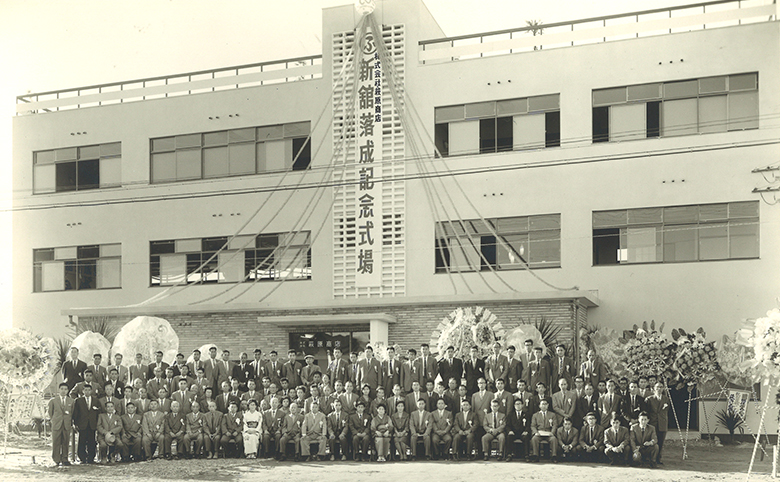
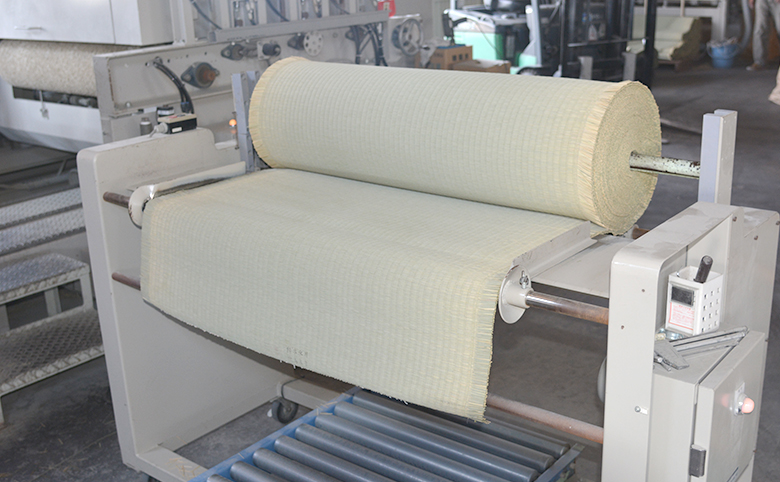
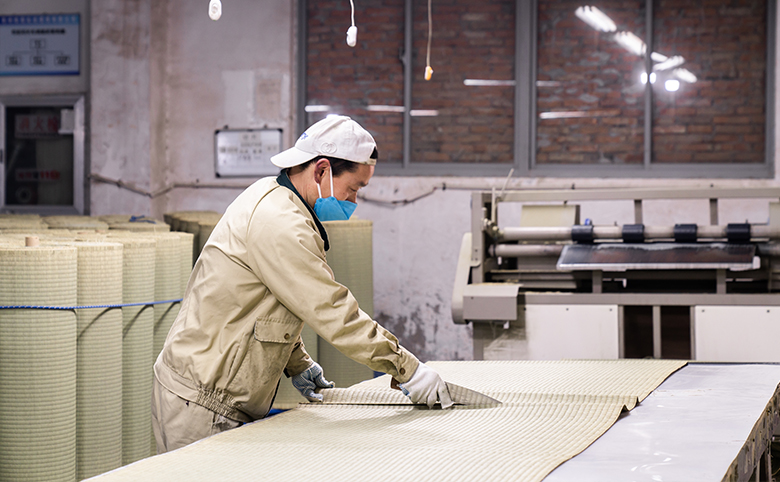
In 1948, following the death of the first-generation Hagiwara Fuiichi, the second-generation Hagihara Fuiichi took over and established the limited company “Hagihara Shouten.”
During this period, the company expanded its sales activities nationwide and actively promoted overseas exports. In 1962, aiming for differentiation from other companies and cost advantages, they established the Mizushima Factory to produce polyethylene warp threads for flower goza, laying the foundation for the later establishment of Hagihara Kogyo Corporation.
Subsequently, the second-generation Hagihara Fuiichi expanded the business by establishing and investing in numerous companies and ventures, including igusa product factories, sales companies, and resin molding manufacturing companies.
In 1977, following the passing of the second-generation Hagihara Fuiichi, the third-generation Hagihara Fuiichi assumed the role of president. However, due to the development of the Mizushima industrial zone in Okayama Prefecture during the high-growth period, pollution occurred. Employment also shifted to Mizushima, leading to the decline of the igusa industry in Kurashiki. Concerned about the difficulty of continuing the core igusa business, they turned their attention to overseas production, expanding to Taiwan and South Korea in addition to entering China in 1972. While enhancing operational efficiency for business continuity, they actively invested in China, establishing Jiangsu Linyi Grass Products Co., Ltd. in Suzhou in 1979, laying the foundation for the manufacturing of Chinese-made igusa products.
In 1983, they established an unusual at that time headquarters showroom.
They emphasized the “Marufu spirit,” creating an attractive environment for clients, encouraging them not only to visit but also to appreciate the allure of Marufu’s products.
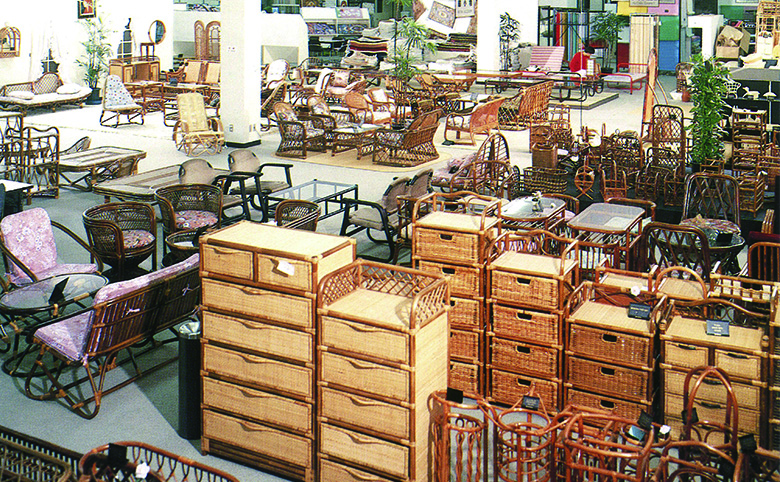
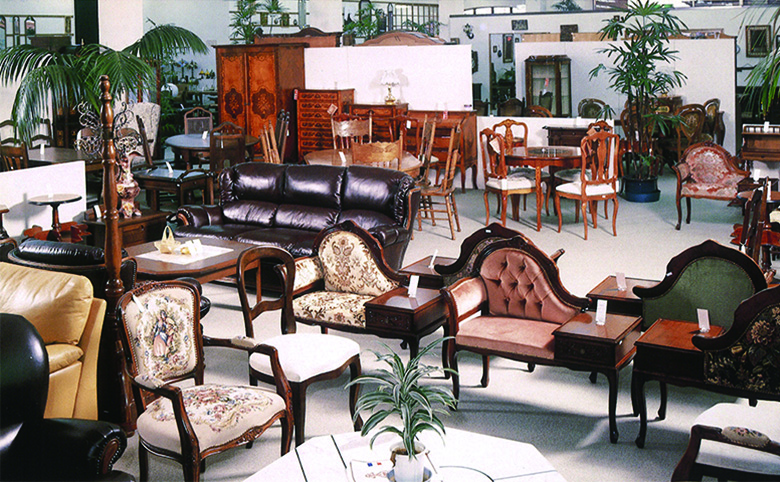
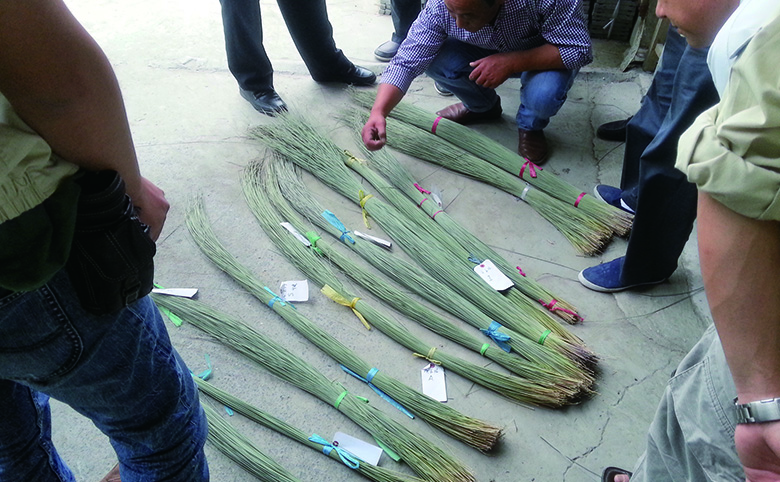
In the late 1970s, concurrently with the venture into the igusa business in China, Hagihara Shouten diversified its operations by venturing into the furniture industry. This marked a significant shift from dealing solely with floor coverings to entering the realm of furniture, transforming the business into a three-dimensional experience.
While the company had already established an igusa factory in Taiwan at that time, the third-generation Hagihara, sensing potential, began importing rattan furniture to Japan. Since there was no established sales network at that time, they introduced the products to local futon retailers and the emerging home centers, gradually expanding their offerings.
Simultaneously, amidst the expansion of exports to European countries and the Middle East, the company initiated the importation of Tang-style wooden furniture and European furniture, operating as both a seller and importer.
In 1985, the Plaza Accord led to a sharp appreciation of the yen, creating a sudden challenge for the export business. To turn this adversity into an opportunity, the third-generation Hagihara decided not to convert the foreign currency earned through exports into yen. Instead, they used it directly for purchasing goods, further expanding the import business.
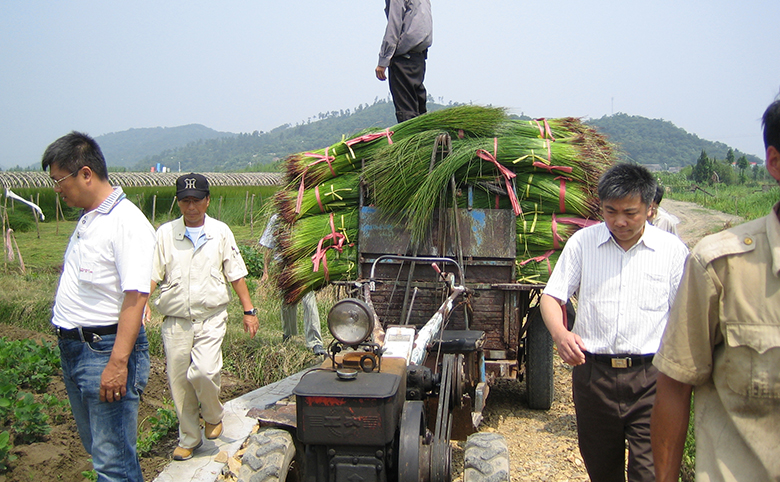
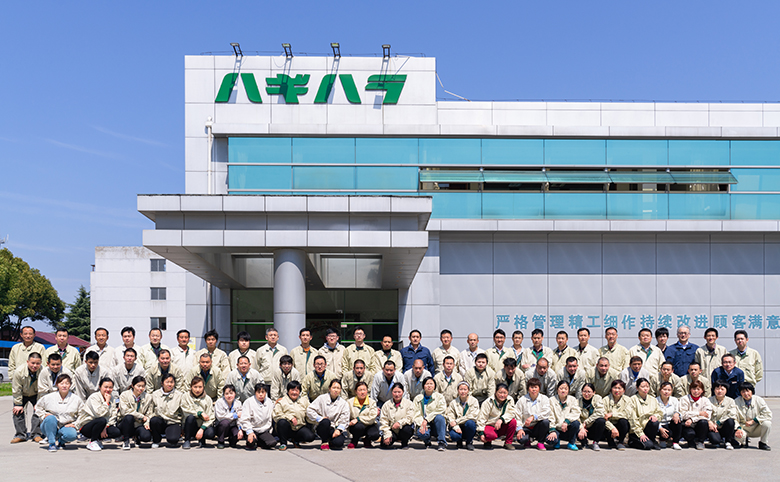
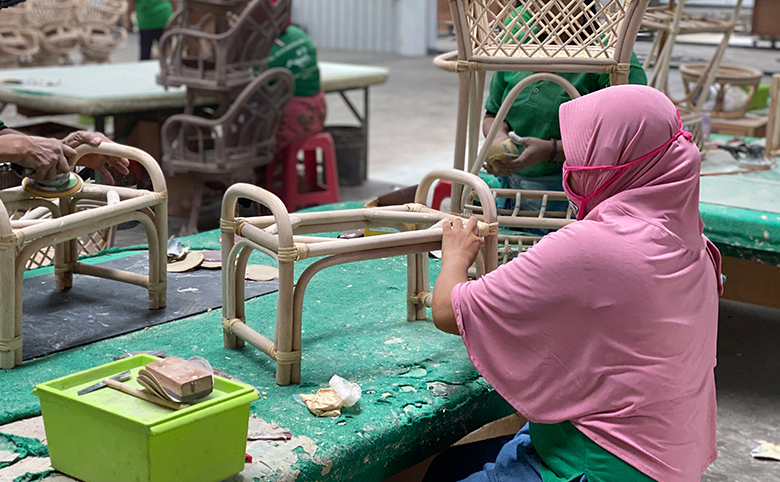
Thus, in 1991, the traditional igusa business, the newly initiated rattan business, and the export and import business from Europe were separated into independent entities. Hagiwara Corporation, Hagihara Three Eye Corporation, and Hagihara Trading Corporation were established.
In the same year, as part of the ongoing China operations since 1972, the company established the industry’s first inspection and distribution center in Shanghai for inspecting igusa products. This move aimed to solidify the company’s positioning in the igusa business in China. Subsequently, the inspection and distribution center moved to Suzhou, Jiangsu Province, in 1995 and became incorporated in 2003.
Through a joint venture with local businesses, Suzhou Hagihara Koyo Rush Grass Co., Ltd. was born.
In the igusa business, serving as pioneers in China, the company continued to guide local industries from cultivation management to final inspection. Simultaneously, the knowledge gained from managing these factories was applied to other businesses, leading to an expansion of the product range.
Despite each entity operating independently after the separation, in a strategic move to achieve further development and synergies, Hagihara Corporation, Hagihara Three Eye Corporation, and Hagihara Trading Corporation merged in 2010. This marked the birth of the new Hagihara Corporation.
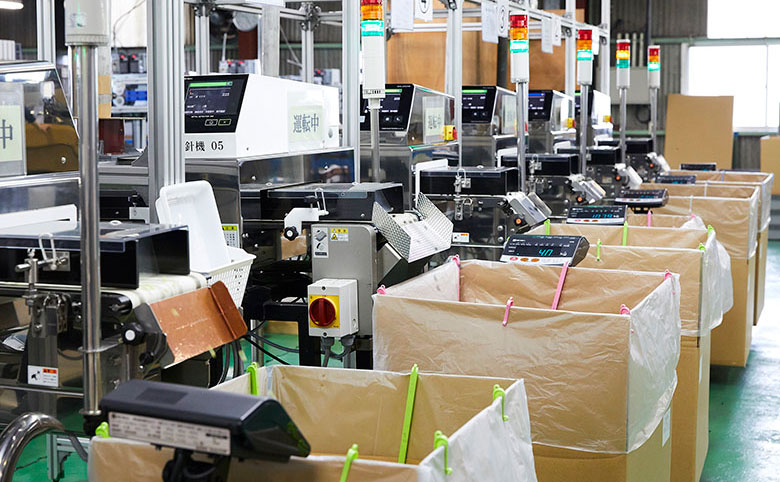

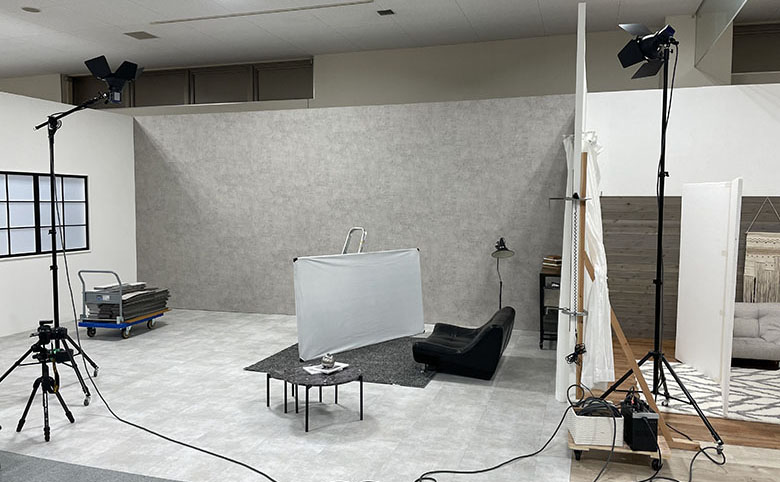
In November 2018, Hideyasu Hagihara assumed the position of President and Representative Director, becoming the fourth-generation leader.
In 2018, recognizing the need for diversification in both product offerings and sales networks, the company ventured into the retail business. They launched the first store, “Hagimono Sha,” as part of this retail expansion.
To adapt to the omnichannel market, the company strengthened the SPA (Specialty store retailer of Private-label Apparel) across departments, enhancing functions from manufacturing to sales. This involved integrating manufacturer functions from raw materials, product planning, transport management, factory operations management, quality control, logistics, wholesale, retail, and promotional functions like SNS. By combining these functions, Hagiwara aimed to transform them into unique strengths that only Hagihara could provide, passing down the sentiments and legacy built by the previous generations to future generations
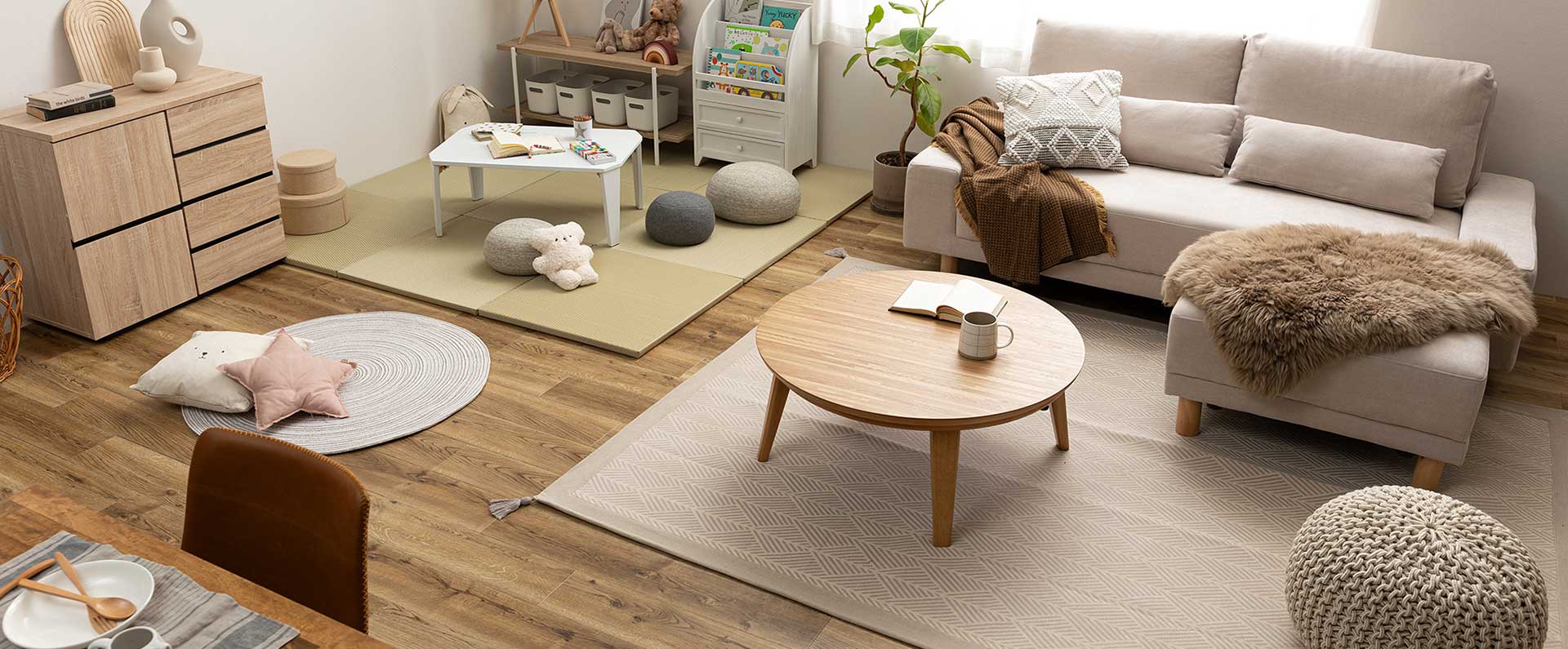
Founded as a goza (tatami mat) manufacturer in Kurashiki, Hagihara Corporation has evolved over time, adapting to the changing era and the diversification of people’s lifestyles.
As times change and people’s lives become more varied, our pursuit remains centered on contributing to a rich and fulfilling life. Hagihara Corporation envisions and strives to connect with your lifestyle, working towards the creation of comfortable and pleasant living spaces for everyone.
Photo credits: Courtesy of the Kurashiki City Historical Archives, Kurashiki City Historical Archives (Photographs donated by Hiroshi Ando).